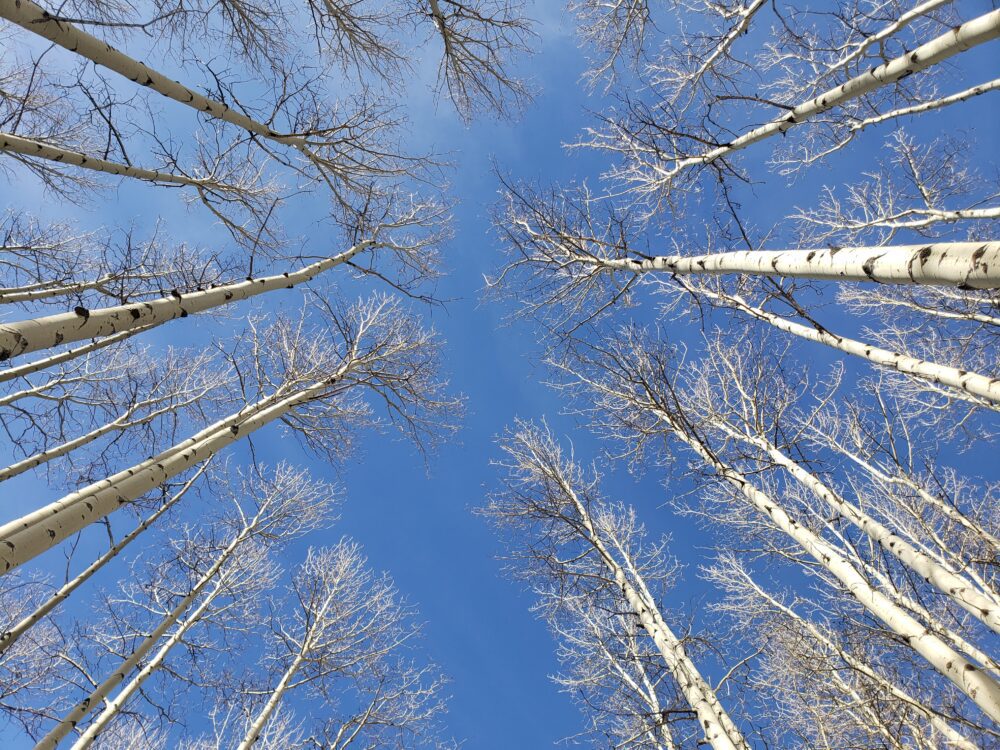By Terry Foxx

For many years I studied the ponderosa forest and survival after fire. As I did many days, I stood amongst a grove of tall ponderosas. That day I was reminded of an ancient Cherokee saying that trees were but ‘standing people.’ At that moment, I felt I was among the people. When I would core a tree to learn its age or health, the tree would make a groaning sound. I felt the tree was expressing its pain of the corer like those who had to walk the trail of tears.
One day I held small, germinated seedlings in my hand. I marveled at the tiny tree and imagined the energy it took to grow tall and straight. It would be buffeted by wind, endure cold, and provide shade for the passerby. Squirrels would hide in its foliage; bears would find refuge in its branches. Like a newborn baby, I would marvel at the mystery of life. Yes, trees often reminded me of ‘standing people.’
It was the evergreen tree that captured the imagination of many different people. The Pagan was reminded of spring when they decorated their home with branches. Christians used it as the symbol of the everlasting God. Today, people of many faiths decorate the Christmas tree, one of many different species.
Many Native American groups also honored the tree. The Northwest Coastal tribes honored the cedar tree and became known as ‘’people of the cedar.” The Delaware or Lenape worshiped not a type of tree but only one tree—a Chinkapin oak. The tree lives in the Oley Valley of Pennsylvania. In 1977 it measured 84 ft tall, had a circumference of 20 ft., and a growth spread of 120 ft. It was estimated to be 500 years old. Most importantly, the tree is one of legends:
There was a LENAPE CHIEF whose wife was wise and a good companion. She was among the most beautiful of the land. Unfortunately, she became desperately ill. He called together all the healers and medicine men to administer all the herbs and prayers to no avail. His wife remained gravely ill. In desperation, he went to the sacred oak that sat in the Valley. There he prayed to the Great Spirit that his wife be saved. When he returned to camp, to his amazement, his wife was healthy with no sign of illness.
The legend also says there was a time the Chief feared attack by a hostile tribe. Again, he travelled to the sacred oak. There he got guidance from the Great Spirit. Taking heed to the guidance he had received, he gathered blankets and beads and journeyed to the enemy camp. The gifts were gratefully accepted, and war was averted, and peace reigned.
The Hopi, the Pueblos, and the Navajo all worship the Cottonwood. From that tree, they carve drums, kachina dolls, and masks. There are many legends of the people, including some of the pueblo people of the Tewa language.
Native Americans worshiped the tree and all of nature. But the tree was also worshipped worldwide. I believe it is because it is bigger than us and lives longer than us. It has longevity.
In Ireland, the Celts believed if they cut down a tribe’s sacred tree, the tribe would be weakened. The Celts had seven different trees that were considered sacred depending on the location of the group. They were oak, ash, apple, alder, hazel, elder, and yew.
To read more about Native American legends, go to Firstpeople.us.
The artist in you may enjoy Roseann’s free tutorial, including her “Around the World in 80 trees” lessons: https://www.exploringoverland.com/field-arts-tutorials#virtualfield

I share your love of trees and liked reading your article.
I just finished: To Speak for the Trees.
It fits well with your article.